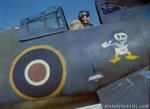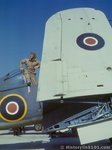from the US Navy Archives.. Must be enroute...Only a few English looking chaps about...
Oh yeah, and an Avenger. Or would it already be a Tarpon?
Oh yeah, and an Avenger. Or would it already be a Tarpon?
Attachments
-
 15124.jpg41 KB · Views: 1,417
15124.jpg41 KB · Views: 1,417 -
 15126.jpg45.6 KB · Views: 1,119
15126.jpg45.6 KB · Views: 1,119 -
 15127.jpg52.3 KB · Views: 1,105
15127.jpg52.3 KB · Views: 1,105 -
 15128.jpg36.6 KB · Views: 1,413
15128.jpg36.6 KB · Views: 1,413 -
 15129.jpg44.1 KB · Views: 1,064
15129.jpg44.1 KB · Views: 1,064 -
 15882.jpg40.9 KB · Views: 1,303
15882.jpg40.9 KB · Views: 1,303 -
 15857.jpg53.1 KB · Views: 1,062
15857.jpg53.1 KB · Views: 1,062 -
 15133.jpg53 KB · Views: 1,242
15133.jpg53 KB · Views: 1,242 -
 15132.jpg48.7 KB · Views: 1,112
15132.jpg48.7 KB · Views: 1,112 -
 15130.jpg40.1 KB · Views: 1,077
15130.jpg40.1 KB · Views: 1,077 -
 15883.jpg37.7 KB · Views: 1,087
15883.jpg37.7 KB · Views: 1,087 -
 15884.jpg52.3 KB · Views: 1,058
15884.jpg52.3 KB · Views: 1,058 -
 15978.jpg39.2 KB · Views: 1,065
15978.jpg39.2 KB · Views: 1,065 -
 15979.jpg44.6 KB · Views: 1,067
15979.jpg44.6 KB · Views: 1,067
